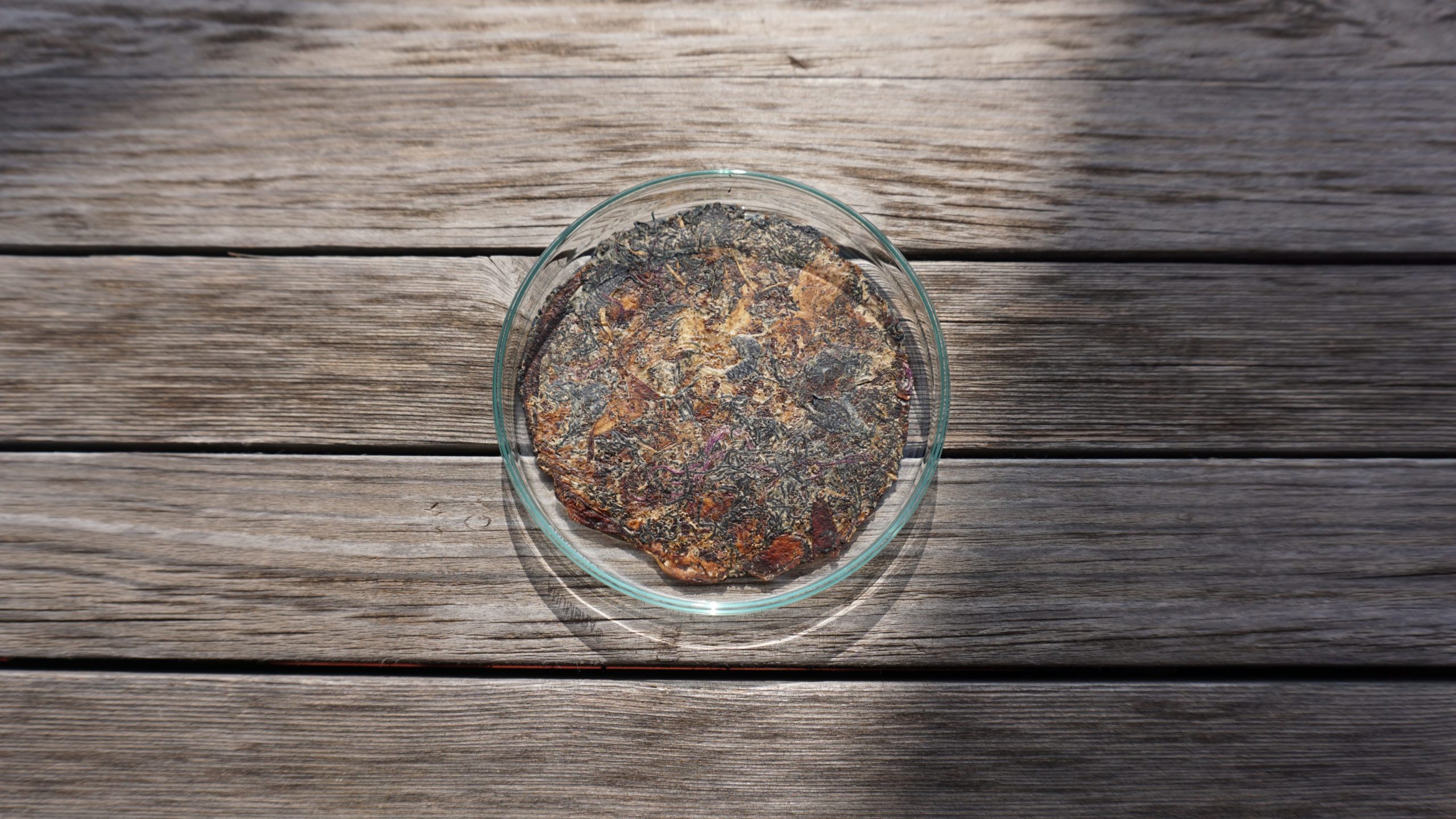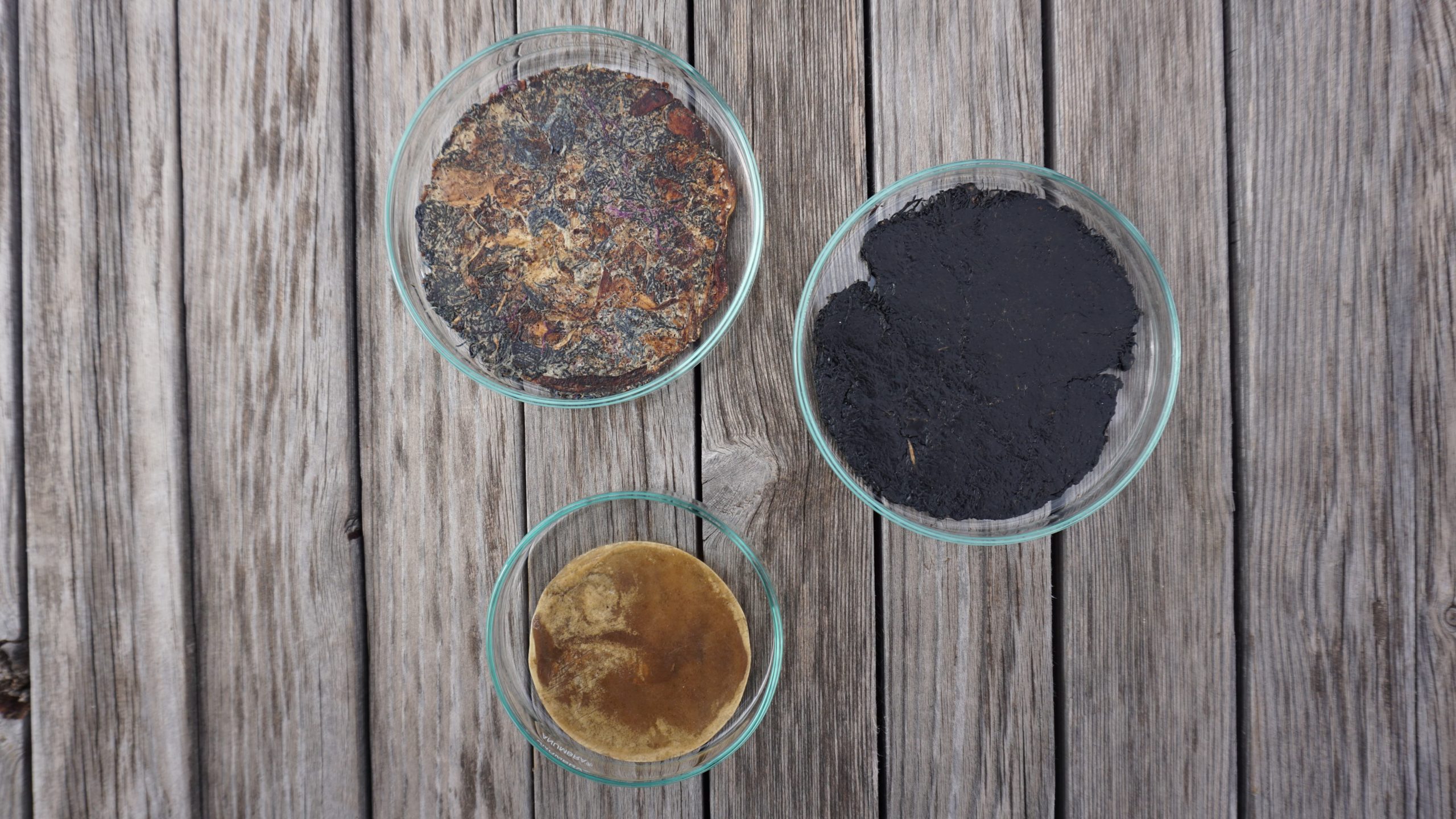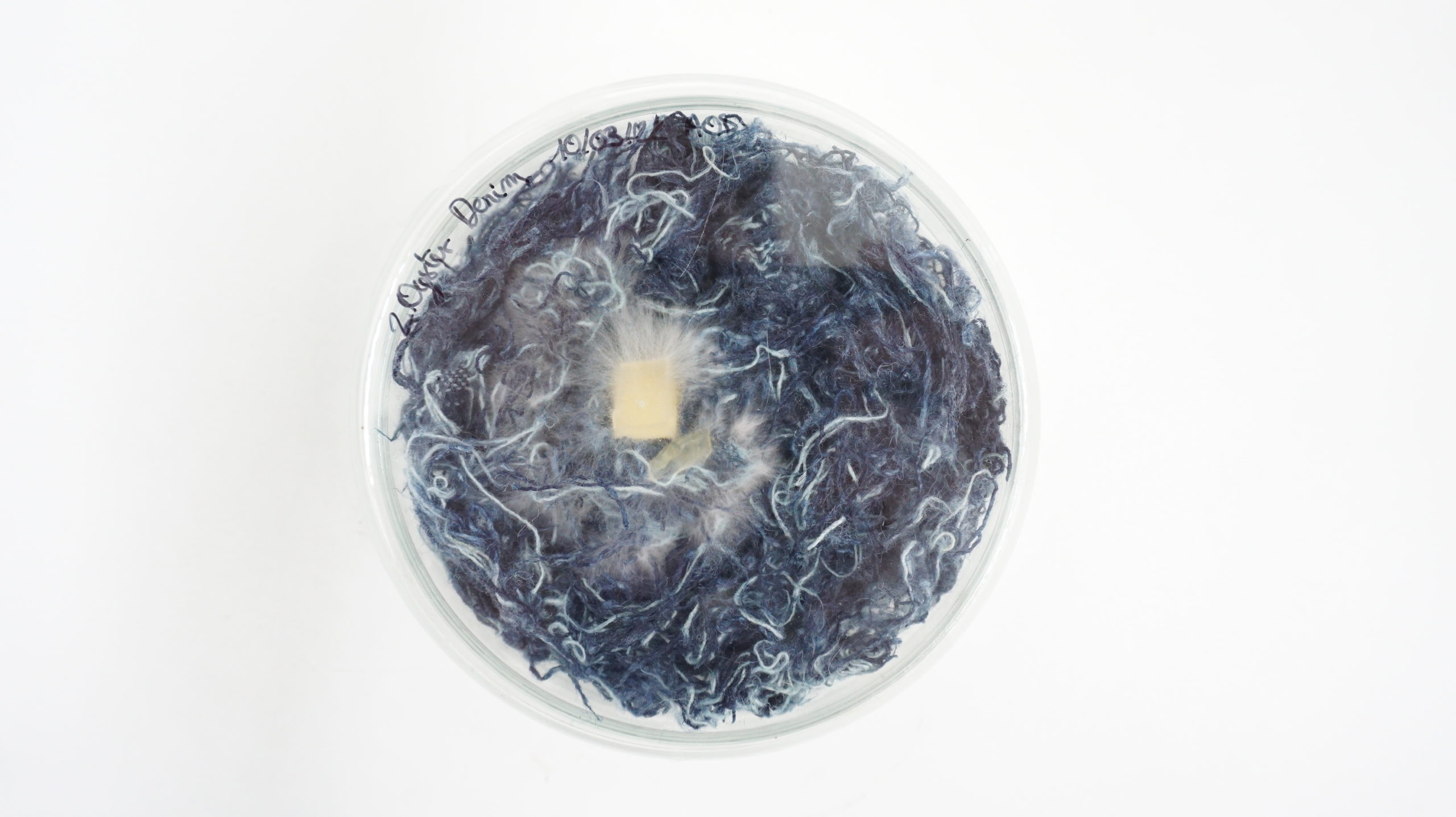The Purhyphae Project

Useful information
- Team members
- Annah-Ololade Sangosanya
- Country
- Spain
- Keywords
- Mycelium leather composite biodegradation bioremediation textile waste food waste circular fashion.
Short Description
Use of mycelium for the biodegradation of textile waste, post-processed into a composite leather.
Detailed Description
Mycelium can biodegrade cellulose and some plastic molecules, offering an opportunity to rethink the linearity of the textile industry. It can also be used to produce leather-like materials, adoptable in the fashion industry. Oyster mushroom mycelium growth was tested on combinations of food waste (vegetable peels and coffee grounds) with textile waste (synthetic textile and denim textile). Results showed it could grow on all these combinations and even grows on denim textile waste only. However, it did not entirely biodegrade the textile, leading to a composite made of the mycelium and remainder of its substrate. Provided the soft nature of the substrate, the composite is also malleable and thus interesting for further textile applications. Post-processing process of the flexible composite material using low energy and natural components (heat, water, glycerol, and beeswax) was created, leading to composite leather-like fungal material, enabling a circular way of treating textiles.
Project Details
- Does your design support sustainable production, embodying circular or regenerative design practices?
The entire design process originates from the problem of the accumulation of textile waste from the fashion industry in nature and the lack of ways to upcycle the textile waste, making clothing a very linear product. This project finds another use of the textile waste by upcycling it, offering the possibility to make textile's life cycles... circular. The use of biological tools for the biodegradation of the textile waste makes this project not only belong to sustainable design but to the domain remediative and regenerative design. The entire process only uses waste as substrates for the growth, natural ingredients for post-processing and low energy for the production, limiting the energy used and the amount of additional waste produced during the recycling process.
- Does your design use principles of distribution and open source?
This project is entierely open source and the research process and conclusions are entierely documented on my website, empowering other designers to experiment more with mycelium leather (rather than animal or plastic leather). One of the goal of the project is also knowledge diffusion and since going through all my written research can be compex, I also made some simple yet detailled video tutorials on how to produce this leather at home, that can be upscaled to the desired size of fabric (https://www.youtube.com/watch?v=wdjg0defxC8&list=PLqGGjO22RBNT89rNMTkPwsLINZlp5HXD-).
Images


